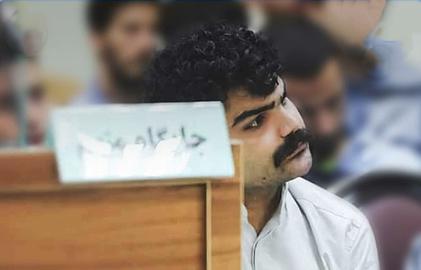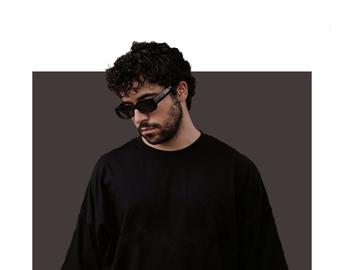For Chilean muralist Nelson Rivas, also known as “Cekis,” painting mirrors his life’s journey.
“The issues in the US have been affecting me,” he said, “I started experiencing things as an immigrant, which is probably the starting point for all these fences and stuff.” He was referring to a tangled knot of purple, red and gray barbed wire and chain link fence he had painted on the mural in front of him.
“But it could symbolize other things, like incarceration, division, and distance,” he said.
Cekis’ mural on 110th Street and Lexington Avenue in East Harlem is the 10th Not A Crime instalment this summer. The campaign uses street art and graffiti to raise awareness about the persecution of Baha’is in Iran. Baha’is, the country’s largest religious minority, are killed with impunity, and cannot receive compensation for crimes committed against them. They are also subject to arbitrary arrest and imprisonment, and their property is often confiscated by the government, according to the United States Department of State. Furthermore, authorities ban Baha’is from attending or teaching at public and private universities. The Not A Crime campaign, along with its New York City partner Street Art Anarchy, plans to commission 15 murals in Harlem by the end of September.
The mural tells the story of a boy aged around seven or eight, who lives in East Harlem, and is constantly affected by events going on around him and the the negative energy they produce. The painting details the child’s mind, shown tapered with a staccato of buildings and tenements. Behind him is the past, defined by fences and darkness. He is reading a book, and has it opened up to a page that features a poem written by Mahvash Sabet. Sabet, 63, is a Baha’i teacher currently imprisoned in Iran because of her religious beliefs.
It reads:
I began to wonder
Whether these confines really defined
The limits of my self.
And then I saw
In the heart of the tar
In the middle of the road
From the dry earth’s blistered core
And the stones in the lumbering tarmac
Deep down from within a crack In the ground at my feet
A few leaves sprouting,
green and neat.
And some days later
There they were again! Bright green!
“The poem relates with the idea of what I had at the beginning, and what I’ve been working toward for the last few years — about division and distance,” said Cekis. Beyond the book lies the child’s future. Meandering rivers with rich foliage evoke ideas about better opportunities as a result of knowledge. “When I moved to the States I started to feel this distance with my family and everything at home, and that’s how I started to relate to different themes, like immigration and incarceration,” the artist said. “The poem fits with my concept.” He told IranWire that the mural's symbolism works on more than one level, and he painted the tropical landscape partially in homage to Puerto Rican immigrants in the neighborhood, as well last to locals originally from Caribbean countries.
Cekis’ modus operandi comes from growing up in Chile under the rule of military dictator Augusto Pinochet, who controlled the country from 1973 to 1990. Cekis' first memories of graffiti and street art are of a strong political imagery, either from the government or citizens using art as protest. “Political propaganda was the first thing I saw on the street,” he said. “They all had socio-political messages, like fighting for some cause,” he said. “There were murals that were against the dictatorship, and people being tortured or disappeared.”
Cekis told IranWire that he was in awe of underground groups painting at night to express ideas that nobody else would. “I remember one that was a chessboard with people organizing against the king. It was very iconic,” he said. “Murals in that era always had people fighting,” he added. The Chilean painter was also influenced by “the big three” Mexican muralists of the early 20th century, Diego Rivera, José Clemente Orozco and David Alfaro Siqueiros, who used their artistic abilities to unite the country around the revolutionary government. Cekis said his murals show the inspiration, and deliver a socio-political message, usually about people co-existing, or barriers, tension, and struggle.
“Mahvash’s poem relates to that idea, and that’s why I’m supporting the cause behind Not A Crime,” he said. “I’m from a country where it looks like everything’s fine and cool, but education is a big issue. People are fighting for it so for me it’s a topic that I can relate to a lot.” Over a hundred students were arrested earlier this year and tens of police officers were injured during student protests in Chile's capital Santiago. The students were calling for education reforms.
Cekis hopes to bring happiness and life into the East Harlem neighborhood with his latest mural. "This could be like a little escape or a little time where people walk by, and they can kinda feel a little better. It’s hard to know how it’s going to affect people, but as long as they smile a little, I think it’s a good thing,” he said.
visit the accountability section
In this section of Iran Wire, you can contact the officials and launch your campaign for various problems






























comments